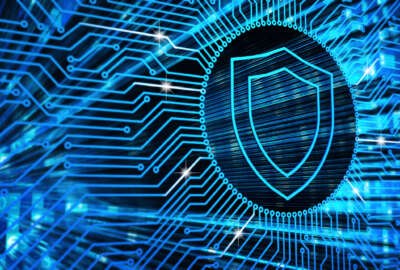Cyber Command nominee sets sights on powerful new budget authority
The nominee to lead Cyber Command says the new authorities will put CYBERCOM on par with the likes of U.S. Special Operations Command from a programming and...
The nominee to lead Cyber Command is eyeing new programming and budgeting authorities that will allow CYBERCOM to set training standards, build out its warfighting forces and partner more closely with industry.
The bureaucratic but significant change was included more than two years ago in the Fiscal 2022 National Defense Authorization Act. The law says that, starting with the fiscal 2024 budget, the head of CYBERCOM will have direct control over the planning, programming, budgeting and execution of resources for the Cyber Mission Force.
Lt. Gen. Timothy Haugh, who currently serves as the deputy commander at CYBERCOM, called the forthcoming change a “critical moment” in the 13-year-old command’s history that will put it on par with more established warfighting organizations like U.S. Special Operations Command.
And he said the shift will “change the dynamic” of an approach to readiness that has largely relied on the military services to train and organize personnel to serve in the 133-team CMF.
“We’ll have the responsibility for the acquisition of the capabilities for our Cyber Mission Force and have the authority to set the training standards,” Haugh said during a July 20 confirmation hearing held by the Senate Armed Services Committee. “It allows Cyber Command to set the investment in our training infrastructure, in our training courses, and allows the services to focus on recruiting; initial skills training aligned to our standard; and then to leverage the retention capabilities that Congress has given to the services.”
The introduction of the new authorities is contingent on Congress passing a fiscal 2024 defense appropriations bill.
And the timeline for Haugh to be confirmed for the dual role of CYBERCOM commander and National Security Agency director is uncertain due to Sen. Tommy Tuberville’s (R-Ala.) hold on all military nominees over his disagreements with the Pentagon’s abortion policies.
But if confirmed, Haugh said the new authority is the top change he’s looking forward to as the CYBERCOM commander.
“The other thing that comes with that is an opportunity to scale,” Haugh said in response to a question from Sen. Markwayne Mullin (R-Okla.). “When we think about the things that we’re doing well today and our ability to defend forward, having budget control, having acquisition authority, having more control of the overall advanced training will allow us to scale and scale faster.”
The new powers will also give CYBERCOM a greater ability to work directly with industry on programs and contracts, especially as it takes on new acquisition authorities.
“Now as we gain our budget control and our acquisition authority, that will allow us to expand how we interact with industry and certainly be able to bring much more resources,” Haugh said. “That will enable us to operate with more speed and agility aligned with our requirements. And we’re excited about that opportunity.”
Dual hat leadership questions
Haugh was asked for his views on the perpetual question around whether one individual should continue to serve as both the commander of CYBERCOM and director of the NSA, an arrangement known as the “dual hat” leadership structure.
Pentagon leadership commissioned retired Marine Corps Gen. Joseph Dunford, the former chairman of the Joint Chiefs of Staff, to lead a study on the issue. And in congressional testimony earlier this year, Gen. Paul Nakasone, the current commander of CYBERCOM and director of the NSA, quoted from Dunford’s study that there are “substantial benefits that present compelling evidence for retaining the existing structure.”
Haugh said he supports the results of Dunford’s report and said he would not change the structure in the future.
“What it reflects is really a maturation of U.S. Cyber Command, and that relationship and operational partnership with the National Security Agency being in the best interests of the nation,” Haugh said. “What it allows is, in reality, the signals intelligence and the cyber environments are overlapping.”
“Having a single leader with the ability to align the capabilities of NSA and Cyber Command gives us greater speed and agility,” he continued. “It also allows us to, at the beginning of planning, be very considerate of how do we protect intelligence sources while still being able to position to produce the outcomes the nation needs us to have.”
Asked whether Congress needs to change anything in law around the dual-hat leadership arrangement, Haugh referenced the potential for more pointed oversight of both CYBERCOM and NSA activities, respectively.
“I think we have the guidance we need to be effective,” he said. “An area that if confirmed I’d like to work with the committee is, how do we communicate and ensure oversight with all of the respective committees to ensure that we are being very clear in how we are using the authorities of each of those organizations to the best effect, consistent with our law, our policy, and our values.”
Copyright © 2025 Federal News Network. All rights reserved. This website is not intended for users located within the European Economic Area.
Follow @jdoubledayWFED





